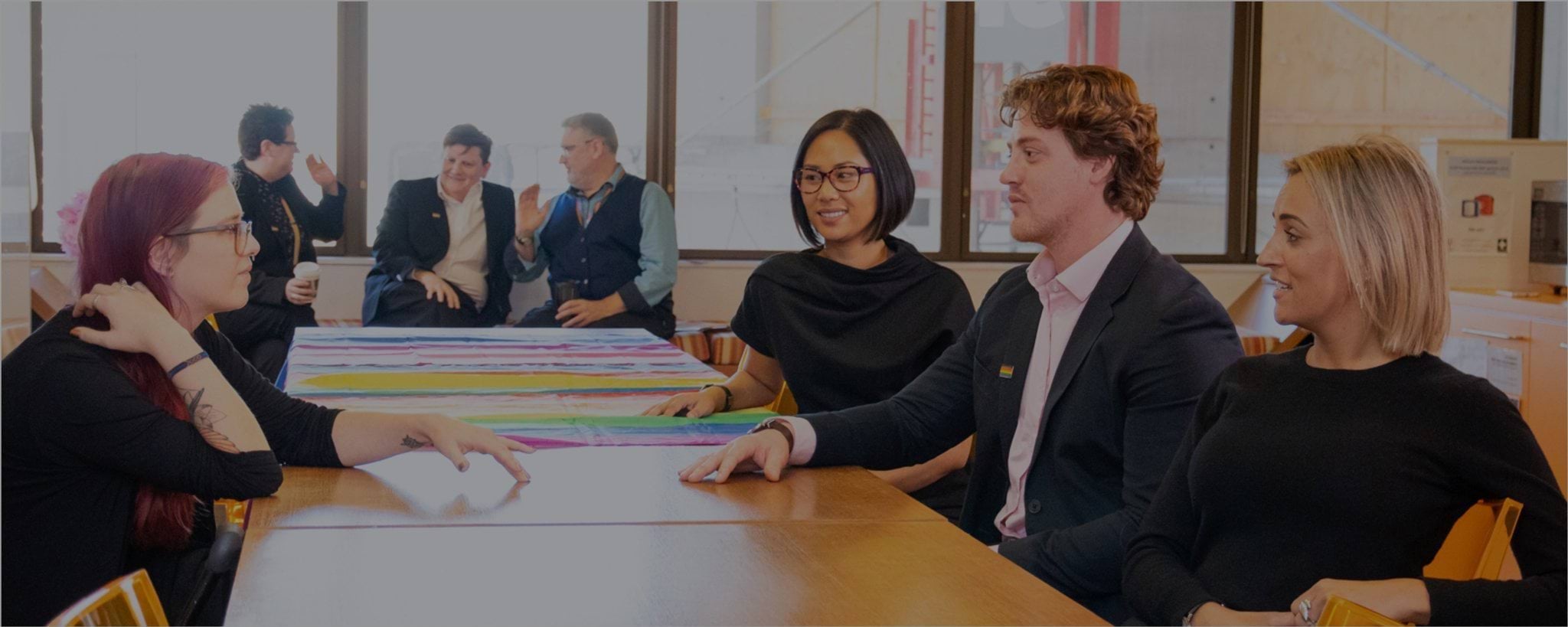Move beyond assumptions
Assuming that everyone is heterosexual or cisgender can have negative impacts on the lives of LGBTIQA+ people. It is good practice to avoid making assumptions about people based on their appearance or stereotypes.
Accept and respect how people define their gender and sexuality. Ask them how they wish to be addressed. If you are speaking on behalf of a group, consult widely to ensure language is reflective of the whole group.
Acknowledge diversity
LGBTIQA+ people are diverse. LGBTIQA+ communities are not homogenous.
We should always use language with care and consideration and an awareness of the diversity within and between groups and people. For example, acknowledging diversity means referring to ‘LGBTIQA+ communities’ rather than just one community.
When using inclusive language, it is important to consider the intersections of a person’s identity. These are different aspects that make up someone’s identity and experiences, such as race, religion, gender, sexual orientation, income or social status, age, ability or migration status.
Respect privacy
We all have a right to privacy. Everyone has the right to choose what information they want to disclose. Someone may or may not want to inform others of personal information relating to their gender and/or sexuality. It may be illegal to force someone to share this information. You should not share or discuss anyone’s personal information without their explicit consent.
Allow yourself to be led by how someone talks about themselves, their family and their relationships. Ask or be guided by them about who to share this information with.
Share your pronouns
Pronouns are the words we use instead of someone’s name when we talk about them, such as she/her, he/him, they/them. Some people use more than one pronoun, such as she/they or he/they. Using someone’s correct pronouns is an essential part of showing respect and inclusion. Normalising the sharing of pronouns can make a big difference to the inclusion of trans and gender diverse people. Sharing your pronouns can signal to your colleagues and others that you are someone who understands and will also respect their pronouns. You can do this by wearing a pronoun badge, introducing yourself with your pronoun/s, or adding your pronoun/s to your email signature.
Like all words people use to describe their identity, pronouns can look different for everyone and can change over time. If you are unsure about someone’s pronouns, use the gender-neutral terms ‘they’ and ‘them’ or the person’s name until you have a chance to confirm with them privately. Some people do not use pronouns but prefer the use of their name instead.
Sharing pronouns is optional. While some people are comfortable sharing theirs, others may not be, and it is important that no one feels pressured. Furthermore, some people’s pronouns may be context specific. For example, someone might not use their pronouns in a particular environment or around particular people because they do not feel safe or comfortable to do so.
Learn from mistakes
It’s okay to make mistakes. People may worry that they will offend someone or be embarrassed if they use the wrong term, name or pronoun, particularly for trans and gender diverse people.
It’s important to try to use respectful language but some mistakes are understandable, particularly when you are learning. If you make a mistake:
- acknowledge the mistake and move on – use their correct gender, pronouns, or name at the next opportunity.
- don’t dwell on it, this may make someone feel more uncomfortable.
- try to avoid making the same mistake again – repeated mistakes indicate a lack of respect and can be very distressing. If it continues, it could constitute bullying or discrimination.
Updated
